
Renia is a genus of litter moths of the family Erebidae erected by Achille Guenée in 1854.
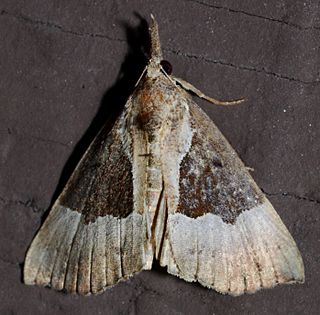
Hypena bijugalis, the dimorphic bomolocha, dimorphic hypena or toothed snout-moth, is a moth of the family Erebidae. The species was first described by Francis Walker in 1859. It is found in North America from Nova Scotia across southern Canada to Vancouver Island, south over the whole United States to Florida.
Hypena edictalis, the large bomolocha, is a moth of the family Erebidae. The species was first described by Francis Walker in 1859. It is found in North America from Quebec and Maine south to Virginia and Kentucky, west to the foothills of Alberta and the Peace River area of British Columbia.
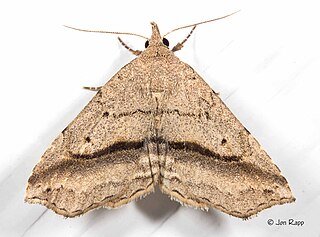
Ledaea perditalis, the buttonbush owlet or lost owlet moth, is a moth in the family Erebidae. The species was first described by Francis Walker in 1859. It is found in North America from the Great Lakes states, Quebec and northern New England, south to Florida and Texas.

Phalaenophana pyramusalis, the dark-banded owlet, is a moth of the family Erebidae. The species was first described by Francis Walker in 1859. It is found in North America from Saskatchewan to Nova Scotia, south to North Carolina and Texas.

Macrochilo orciferalis, the chocolate fan-foot or bronzy macrochilo, is a litter moth of the family Erebidae. The species was first described by Francis Walker in 1859. It is found in North America from Wisconsin to Nova Scotia, south to Florida and Texas.

Phalaenostola eumelusalis, the punctuated owlet or dark phalaenostola, is a moth of the family Erebidae. The species was first described by Francis Walker in 1859. It is found in North America from New Brunswick, North Dakota and South Dakota to Maine, south to Georgia and Iowa. In the north it is also found in Saskatchewan.
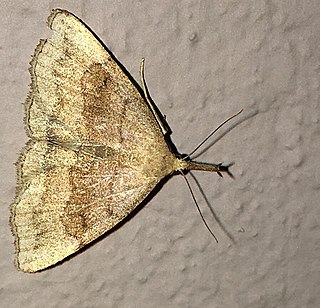
Phalaenostola metonalis, the pale phalaenostola, tufted snout or pale epidelta, is a moth of the family Erebidae. The species was first described by Francis Walker in 1859. It is found in North America from British Columbia to Newfoundland, south to North Carolina, west to Missouri.

Tetanolita mynesalis, the smoky tetanolita, is a litter moth of the family Erebidae. The species was first described by Francis Walker in 1859. It is found in eastern North America.
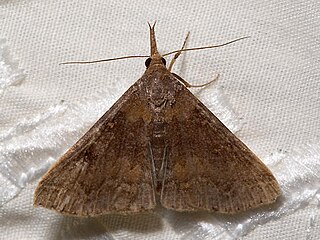
Renia discoloralis, the discolored renia, is a litter moth of the family Erebidae. The species was first described by Achille Guenée in 1854. It is found in the United States from Missouri to southern New England, south to at least North Carolina and possibly Florida and Texas, but this might be an unnamed relative.

Renia salusalis, the dotted renia, is a litter moth of the family Erebidae. The species was first described by Carl Linnaeus in his 1758 10th edition of Systema Naturae. It is found in the United States from Colorado, Ohio and Connecticut, south to Florida and Texas.
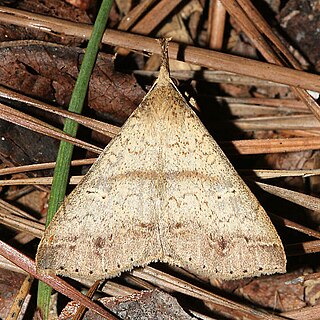
Renia adspergillus, the gray renia or speckled renia moth, is a litter moth of the family Erebidae. The species was first described by Louis Augustin Guillaume Bosc in 1800. It is found in North America from Michigan to Quebec and south to Louisiana and Florida.
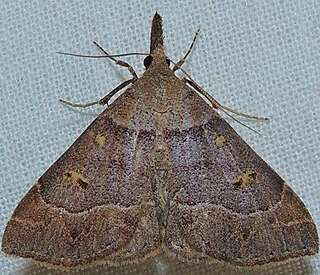
Renia flavipunctalis, the yellow-dotted renia, yellow-spotted renia or even-lined renia, is a litter moth of the family Erebidae. The species was first described by Carl Geyer in 1832. It is found from southern Canada to Florida and Texas.
Renia nemoralis, the tardy renia or chocolate renia moth, is a litter moth of the family Erebidae. It is found in the US from Illinois to south-eastern Massachusetts south to Florida and Texas. The species was first described by William Barnes and James Halliday McDunnough in 1918.

Renia fraternalis, the fraternal renia, is a litter moth of the family Erebidae. The species was first described by J. B. Smith in 1895. It is found in North America, including New York, Oklahoma, Arkansas, South Carolina and Florida.

Renia sobrialis, the sober renia, is a litter moth of the family Erebidae. The species was first described by Francis Walker in 1859. It is found from Nova Scotia to Florida, west to Mississippi and Minnesota.
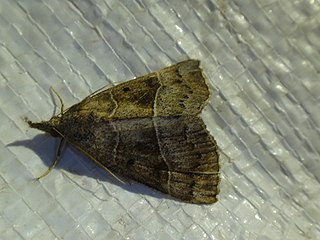
Hypena deceptalis, the deceptive hypena or deceptive bomolocha moth, is a moth of the family Erebidae. The species was first described by Francis Walker in 1859. It is found in North America from Manitoba to Quebec, south to Florida and Texas. It is absent from much of Gulf Coastal Plain though.

Hypena abalienalis, the white-lined hypena or white-lined bomolocha moth, is a moth of the family Erebidae. The species was first described by Francis Walker in 1859. It is found from southern Canada to northern Florida and Texas.
Hypena eductalis, the red-footed bomolocha moth or alder smoke, is a moth of the family Noctuidae. The species was first described by Francis Walker in 1859. It is found in North America from Saskatchewan to Nova Scotia south to Florida and Texas.
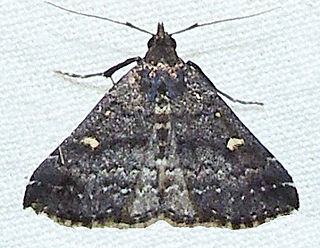
Hypenula cacuminalis, the long-horned owlet moth, is a moth of the family Erebidae. The species was first described by Francis Walker in 1859. It is found from the south-eastern United States west to Texas and Arizona.

















